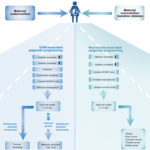
Traditionally, gerontological research is focused on later stages of life cycle. Accumulating evidence, however, suggests that the rate of aging-associated functional decline (senescence) as well as the risk for chronic pathological conditions can originate early in life.